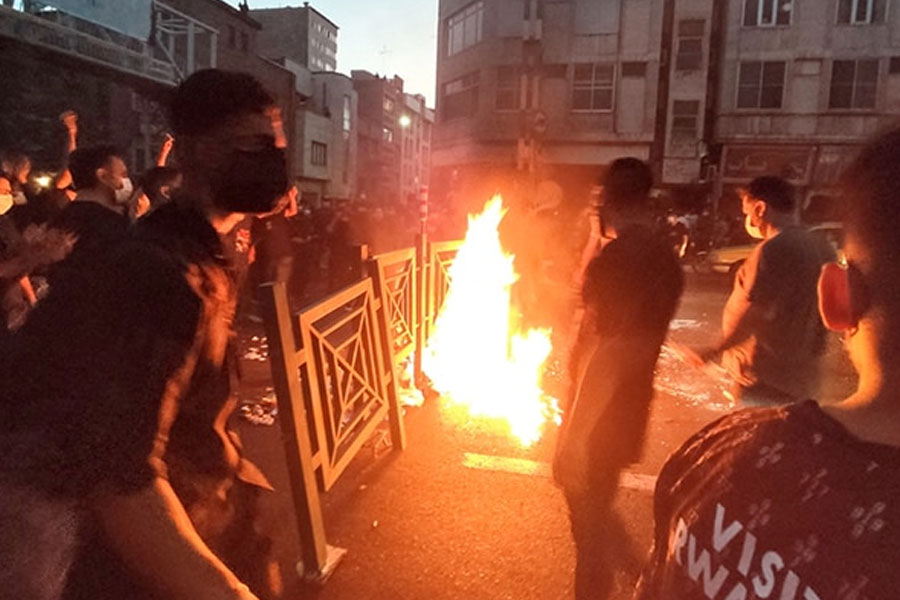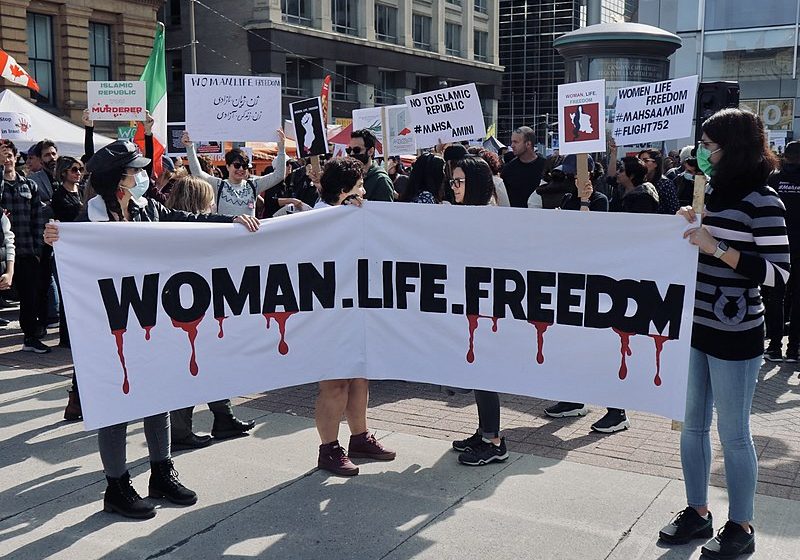Australia/Israel Review, Featured
A Turning Point?
Nov 22, 2022 | Jonathan Spyer

Iran’s protests reach a critical juncture
Protests in Iran have now passed their eighth week. There are no signs as yet that the determination of the demonstrators is flagging. The situation appears to directly refute claims by Iranian President Ebrahim Raisi in early November that Iran’s cities were “safe and sound”. From their beginnings in Iran’s Kurdistan province, the demonstrations have now spread throughout the country.
The US-based Institute for the Study of War, which has been closely monitoring developments, counted at least 30 protests taking place in 15 cities across 11 of Iran’s provinces in the first days of November.
These included a commercial strike in Saqqez, hometown of Mahsa (Zhina) Amini, whose death at the hands of the authorities triggered the current unrest. Students demonstrated at a variety of locations across Teheran. Mashhad, Sanandaj, Mariwan and many other cities witnessed unrest.
The chants of the protesters are no longer limited to calls for ending the compulsory wearing of the hijab, or indeed to the generic call of “Women, Life, Freedom” – originally a Kurdish revolutionary slogan the Iranian demonstrators made their own.
Rather, the demonstrators now are openly calling for the overthrow of the Islamic regime, which has ruled Iran for the last 40 years. Frequently, now, according to multiple reports, slogans such as “death to the dictator” and “death to the system” may be heard.
The usual methods employed by the regime for the rapid dispersal of protests, meanwhile, do not appear to be working. In the past, the shutting down of the internet across large swathes of the country, and then the employment of extreme force, served to bring periods of protest to a close. In this way, in 2009 and then again in 2019, the regime managed to quell widespread demonstrations.
This time, too, the regime’s approach has been very far from restrained, and is including the use of live ammunition against unarmed protesters. Iran Human Rights, an Oslo-based human rights organisation, estimates that by November 12, 326 people had been killed by the Iranian authorities in their efforts to put down the protests.
The organisation, notably, also recorded 123 of the deaths of protesters occurred in Sistan and Baluchestan. In this remote, majority Sunni province, far from the eyes of the world, the Iranian authorities appear to be adopting harsher tactics.
Sistan and Baluchestan also appears to be witnessing incidents of armed resistance. In the latest of these, four policemen were shot dead at a checkpoint on the Iranshahr- Bampur road in the province.
Some observers have suggested that the high representation of women in the protests in many parts of the country is serving to prevent the application of more harsh and brutal tactics by the authorities.
Whether or not this is the case, it is a fact that the situation in Iran appears to be approaching a turning point.
The authorities have failed to halt the protests. The regime is unable to tolerate indefinitely a situation of widespread and ongoing disruption and disorder, which by its very nature undermines its authority.
But the protesters, too, have not yet succeeded in truly posing the question of power in Iran. That is, the level of pressure currently employed against the regime is nowhere near the amount that would be necessary to threaten its continued existence.
No revolutionary leadership, able to direct the ongoing demonstrations and focus them as part of a plan for the seizure of power, currently exists in Iran. This inchoate, decentralised nature of the protests has been much remarked upon by observers. Many have seen this as part of the “Generation Z,” “TikTok” character of this uprising, which represents the entry of a new, unafraid generation of activists onto the Iranian stage. While such a characterisation may well be accurate, it should be noted that ultimately, to take power, an organised movement, with political and probably also military aspects, is a necessity.
Also, there are no visible signs yet of serious cracks and fissures in the Iranian security forces, a necessary requirement for any chance of toppling the regime.
So Iran today is characterised by ongoing and widespread unrest, at a level intolerable to the authorities. But it is not yet in what might be called a pre-revolutionary situation.
This means that both the authorities and the demonstrators face hard choices in the phase now opening up. The authorities need to find a way to delegitimise the protesters as a prelude to the use of greater force.
A recent report in the Wall Street Journal revealed indications that the regime may be planning to achieve this by artificially heightening regional tensions, to distract attention and portray the protesters as unpatriotic and separatist. According to the report, the regime may be planning an imminent military strike, either on Saudi Arabia or on targets in Iraqi Kurdistan.
Any attack on Saudi Arabia would likely be carried out by a proxy organisation, probably either Yemeni or Iraqi. In Iraqi Kurdistan, by contrast, the regime’s track record suggests that it would be more likely to employ its own declared forces. This is in keeping with Teheran’s general approach of using the greatest and most direct force on its weakest enemies while disguising or avoiding the employment of force against stronger foes.
There is already a precedent for action against Kurdish targets in Iraq. On Sept. 28, Teheran launched missile attacks on the facilities of two Iraq-based Iranian Kurdish militant groups – the KDPI and Komala parties. The intention was to portray the protests in Iran as directed by external militant organisations.
Once the protests could be “framed” in this way as representing an externally directed security threat, the way would be clear for the use of greater force against them. This may well be the direction the regime chooses in the period ahead. It is not without risk, although, in general, the Iranian Kurdish groups are isolated and without powerful friends. [Ed. Note: In fact there were two such attacks on Iraqi Kurdistan shortly after this article was written.]
For the protesters, the dilemma is no less stark. In the event of the application of harsher tactics by the regime, or even in their absence, the protesters now need to find a way to increase the pressure.
Many Iranians supportive of the protests nevertheless fear what they refer to as a “Syrian” scenario in Iran. By this, they mean a situation in which an attempt to crush the protests using maximum force then leads to an armed response by elements of the opposition. This would then open the door to armed civil strife in Iran, with a potentially terrible cost in human lives.
The opposition, particularly in Kurdistan and Sistan and Baluchestan, has some access to weaponry. There have already been instances where protesters have taken temporary control of neighbourhoods, only to disperse after the authorities moved forces toward the area.
But many observers caution against the premature introduction of weapons into the fight, since this may provide the authorities with precisely the excuse they are looking for.
On the other hand, ongoing passivity amid a rising death toll is also not an attractive option.
There are no easy solutions. Iranian protesters are likely to confront the fact in the period ahead that revolutions are by their very nature a leap in the dark. Whether you get a victory – or Syria – on the other side of the jump cannot be known in advance.
In any case, the revolutionary dynamic in Iran appears to be approaching an inflection point, beyond which it must either escalate or dissipate.
Jonathan Spyer is Director of Research at the Middle East Forum and director of the Middle East Center for Reporting and Analysis. Reprinted from the Jerusalem Post. © Jerusalem Post (www. jpost.com), reprinted by permission, all rights reserved.
Tags: Iran, Kurdistan, Mahsa Amini, Women Life Freedom






